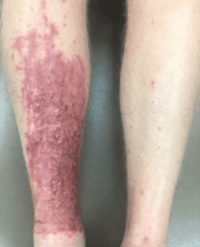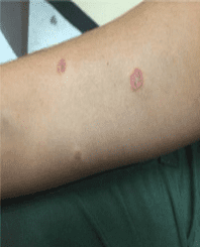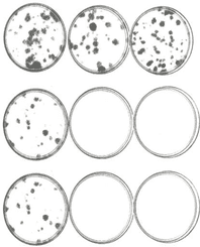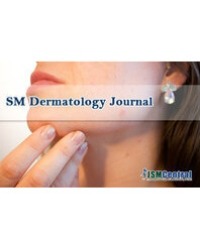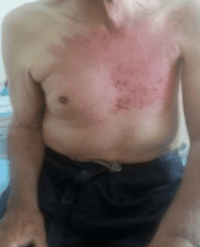
A Sclerodermiform Breast Cancer
Cancer of the male breast is a rare disease in men. It composes less than 1% of all breast carcinomas and less than 1.5% of all malignant tumors in men [1]. Epidemiologic features, prognostic factors, survival by stages, patterns of metastasis, treatment and response to treatment in men are similar to that of women with breast carcinoma. However, breast cancers in men are more likely to respond to hormonal manipulation [2]. Metastases will occur in about one third of the patients; as in female breast cancer, the common sites are the lung, bone, brain, liver, lymphnodes and skin [3].
Skin involvement as a symptom, or even the presenting sign, of this cancer in men is not well known by dermatologists [4]. In fact, a review of the literature reveals few references about this subject.
The purpose of ourwork, through a case of breast cancer in humans and a literature review, is to describe the epidemiological, clinical and therapeutic aspects of breast cancer in humans.
Moustaide K*, Aqil N, Nassiri A, Baybay H, Gallouj S and Mernissi FZ

